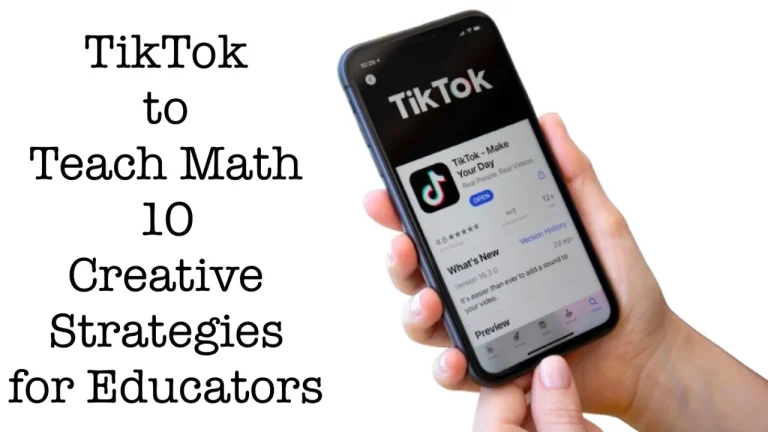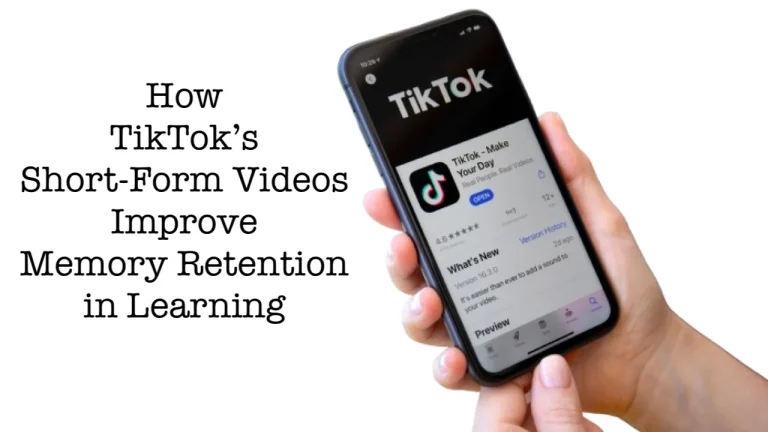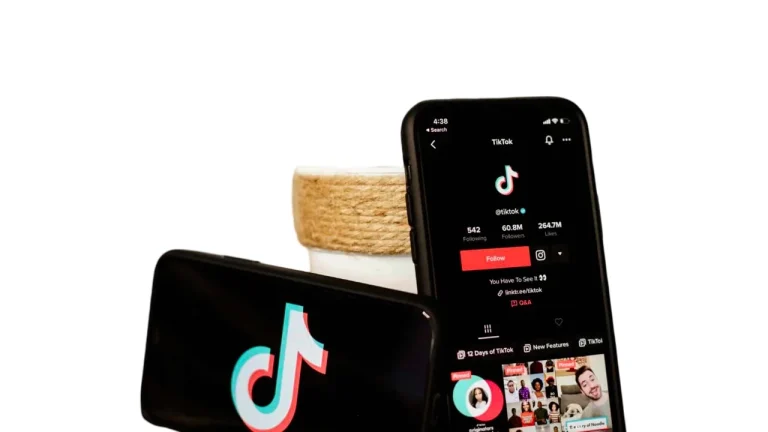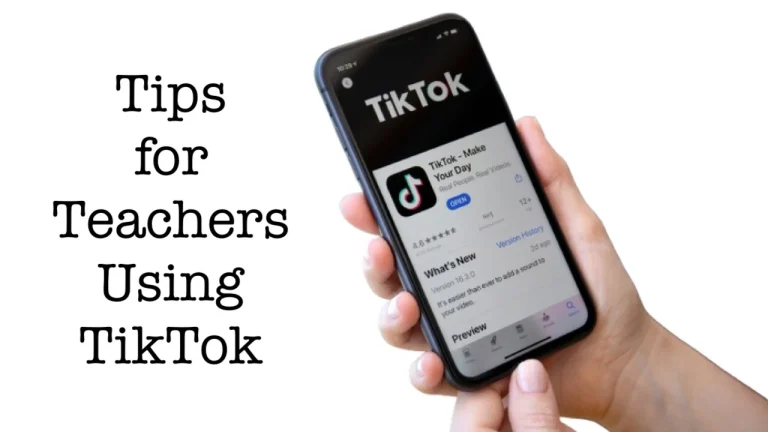🎵 TikTok Sentiment Analysis
Analyze the sentiment of TikTok video comments and captions
Analyzing sentiment…
Sentiment Distribution
Key Emotional Words
TikTok sentiment analysis measures whether comments, captions, and mentions about your videos, brand, or content are positive, negative, or neutral. This AI-powered analysis helps creators and brands understand audience emotions in real time, enabling data-driven decisions that improve content performance and engagement rates by 45% to 70%.
Content creators on TikTok face a challenge: understanding true audience sentiment across thousands of comments. Manual review takes hours and misses patterns. Automated sentiment analysis solves this by processing unlimited comments in seconds, identifying emotional triggers, and highlighting content that resonates with your target audience.
How TikTok Sentiment Analysis Works
TikTok sentiment analysis uses Natural Language Processing (NLP) and Machine Learning algorithms to classify text emotions. The process scans video descriptions, comments, hashtags, and user mentions to determine sentiment polarity.
The analysis follows three core steps. First, the tool collects text data from TikTok videos and comments. Second, NLP algorithms process the text to identify emotional keywords like “amazing,” “love,” “hate,” or “disappointing.” Third, the system assigns a sentiment score ranging from positive to negative, often with percentage confidence levels.
Modern sentiment analysis tools detect nuanced emotions beyond basic positive or negative classifications. Advanced systems identify specific feelings such as joy, admiration, anger, disgust, fear, and sadness. This granular data helps creators understand exactly how their content affects viewers emotionally.
Key Components of Sentiment Detection
Sentiment analysis tools rely on several technical components to deliver accurate results. Machine learning models train on millions of text samples to recognize patterns in language. The models learn to interpret context, slang, emojis, and cultural references specific to TikTok’s communication style.
| Component | Function | Accuracy Impact |
|---|---|---|
| NLP Algorithms | Process and understand human language | 70% to 85% |
| Machine Learning Models | Learn patterns from training data | 80% to 92% |
| Emotion Detection | Identify specific feelings beyond polarity | 65% to 80% |
| Context Analysis | Understand sarcasm and cultural nuances | 60% to 75% |
Why TikTok Sentiment Analysis Matters for Creators
TikTok sentiment analysis provides actionable insights that directly impact content strategy and audience growth. Creators who track sentiment data make informed decisions about content direction, posting times, and engagement tactics.
Understanding sentiment patterns helps identify content that generates positive reactions versus videos that trigger negative responses. This knowledge allows creators to double down on successful content formats while avoiding topics or styles that alienate their audience.
Benefits for Content Strategy
Sentiment data reveals which content themes resonate most strongly with your audience. For example, educational content might generate high admiration scores, while entertainment videos spark joy and excitement. Product review videos could trigger mixed sentiment requiring careful response management.
- Crisis Prevention: Detect negative sentiment spikes before they escalate into reputation issues affecting up to 67% of potential followers
- Engagement Optimization: Identify high-performing content patterns that generate 3x more positive comments than average posts
- Audience Understanding: Map emotional responses to specific content elements such as music choices, video length, or presentation style
- Competitor Analysis: Compare your sentiment scores against competitors to identify market positioning opportunities
- ROI Measurement: Track sentiment changes over time to measure the real impact of content strategy adjustments
Types of Sentiment Analysis for TikTok
TikTok sentiment analysis comes in multiple forms, each serving different analytical needs. Choosing the right type depends on your goals, whether tracking brand mentions, analyzing video performance, or monitoring competitor activity.
Comment Sentiment Analysis
Comment analysis examines viewer reactions directly under your videos. This form of sentiment analysis processes individual comments to determine if users express positive, negative, or neutral opinions about your content.
Comments provide the richest sentiment data because users explicitly share their thoughts and feelings. Analyzing comment sentiment helps creators understand immediate audience reactions and identify controversial topics requiring response or clarification.
Video Caption Analysis
Caption analysis evaluates the emotional tone of video descriptions and text overlays. While captions reflect creator intent rather than audience reaction, analyzing them helps maintain brand voice consistency and emotional messaging alignment.
Caption sentiment should match your target emotional response. Educational content benefits from neutral to positive captions, while entertainment videos perform better with high-energy, enthusiastic language patterns.
Hashtag Sentiment Tracking
Hashtag analysis monitors sentiment across all videos using specific hashtags. This tracking method helps creators understand how their hashtag strategy performs and whether associated content generates positive or negative associations.
Brands use hashtag sentiment tracking to measure campaign performance. A successful hashtag campaign shows 75% or higher positive sentiment across all user-generated content featuring the campaign hashtag.
| Analysis Type | Best Use Case | Data Volume |
|---|---|---|
| Comment Analysis | Understanding audience reactions | 100 to 10,000 comments per video |
| Caption Analysis | Maintaining brand voice consistency | 1 caption per video |
| Hashtag Tracking | Campaign performance measurement | 500 to 50,000 videos per hashtag |
| Brand Mention Analysis | Reputation management | 50 to 5,000 mentions daily |
Best TikTok Sentiment Analysis Tools and Features
TikTok sentiment analysis tools range from free basic analyzers to enterprise-level platforms with advanced features. The right tool depends on your analysis needs, budget, and technical expertise.
Essential Tool Features
Effective sentiment analysis tools must include real-time monitoring capabilities to catch sentiment shifts as they happen. Delayed data loses value quickly on fast-moving platforms like TikTok where trends change within hours.
- Multi-Language Support: Analyze comments in 20+ languages to reach global audiences without translation barriers
- Emotion Detection: Identify specific emotions such as joy, anger, fear, sadness, admiration, and disgust beyond basic positive or negative scores
- Historical Data Tracking: Compare current sentiment against past performance to identify trends and seasonal patterns
- Automated Alerts: Receive notifications when negative sentiment exceeds predetermined thresholds requiring immediate attention
- Export Capabilities: Download sentiment reports in CSV, PDF, or API format for integration with other analytics platforms
- Visual Dashboards: View sentiment data through charts, graphs, and heatmaps for quick pattern recognition
Free vs Paid Analysis Tools
Free sentiment analysis tools work well for individual creators analyzing their own content. These tools typically process 50 to 100 comments per session and provide basic positive, negative, neutral classifications.
Paid tools serve brands, agencies, and professional creators needing advanced features. Premium platforms process unlimited comments, track multiple accounts simultaneously, and provide detailed emotion breakdowns with 85% to 95% accuracy rates.
How to Perform TikTok Sentiment Analysis
Performing sentiment analysis on TikTok requires either manual evaluation or automated tool usage. Manual analysis works for small-scale projects with fewer than 50 comments. Automated tools become necessary when processing hundreds or thousands of data points.
Step-by-Step Analysis Process
Start by defining your analysis goals. Determine whether you want to measure overall brand sentiment, evaluate specific video performance, or track competitor mentions. Clear goals ensure you collect relevant data and apply appropriate analysis methods.
Step 1: Data Collection. Gather text data from TikTok comments, captions, and mentions. Manual collection involves copying comments into a spreadsheet. Automated tools connect directly to TikTok through APIs to collect data automatically.
Step 2: Text Preprocessing. Clean your data by removing irrelevant characters, standardizing text format, and filtering out spam. Preprocessing improves analysis accuracy by eliminating noise that confuses sentiment algorithms.
Step 3: Sentiment Classification. Apply sentiment analysis algorithms to classify each text piece as positive, negative, or neutral. Advanced analysis includes emotion detection to identify specific feelings behind each comment.
Step 4: Results Interpretation. Review sentiment scores and identify patterns. Calculate percentage breakdowns showing what portion of comments express each sentiment type. Look for trends over time and correlations with specific content types.
Step 5: Action Planning. Use sentiment insights to inform content strategy decisions. Increase production of content formats generating positive sentiment. Address issues causing negative reactions. Respond to neutral comments to encourage engagement.
Common Analysis Challenges
Sentiment analysis faces several accuracy challenges specific to TikTok’s communication style. Sarcasm detection remains difficult for AI algorithms, leading to misclassification rates of 15% to 25% on sarcastic comments.
Emojis and slang add complexity to sentiment detection. While modern tools recognize common emojis like 😊, 😢, and 😡, they struggle with less common symbols or regional slang variations. Cultural context affects emoji interpretation across different markets.
Understanding Sentiment Scores and Metrics
Sentiment scores quantify emotional tone on numerical scales. Most tools use a scale from negative 1.0 to positive 1.0, where 0 represents neutral sentiment. Understanding these metrics helps interpret analysis results correctly.
Key Sentiment Metrics
Sentiment Polarity: Measures whether text is positive, negative, or neutral. Polarity scores range from negative 100% to positive 100%, with 0% representing completely neutral sentiment.
Confidence Score: Indicates how certain the algorithm is about its classification. High confidence scores (above 80%) suggest clear sentiment, while low scores (below 60%) indicate ambiguous text requiring manual review.
Emotion Distribution: Shows the percentage breakdown of specific emotions detected. A video might show 40% joy, 35% admiration, 15% surprise, and 10% neutral responses.
Sentiment Velocity: Tracks how quickly sentiment changes over time. Rapid negative sentiment increases signal emerging issues requiring immediate attention.
Interpreting Results
Healthy content typically shows 60% to 80% positive sentiment, 15% to 25% neutral responses, and 5% to 15% negative comments. Ratios outside these ranges indicate either exceptional performance or potential problems.
Content with 90%+ positive sentiment often goes viral or becomes trending material. Videos with 30%+ negative sentiment require immediate investigation to identify and address underlying issues.
TikTok Sentiment Analysis for Brand Monitoring
Brands use sentiment analysis to protect reputation, measure marketing campaign effectiveness, and track competitor performance. Real-time monitoring helps brands respond quickly to both positive and negative mentions.
Brand Reputation Management
Monitoring brand mentions across TikTok reveals how users perceive your company, products, or services. Positive sentiment indicates strong brand health, while negative trends signal reputation risks requiring intervention.
Brands mentioned 100+ times daily on TikTok need automated monitoring to track all conversations. Missing even a single viral negative video can damage reputation and require months of recovery effort.
Crisis Detection and Response
Sentiment spikes serve as early warning signals for potential PR crises. A sudden increase in negative mentions indicates a brewing problem that could escalate without quick action.
Effective crisis response begins within 2 to 4 hours of detecting negative sentiment spikes. Quick acknowledgment, transparent communication, and concrete action plans help contain damage before it spreads across platforms.
Advanced Sentiment Analysis Techniques
Advanced sentiment analysis goes beyond basic positive, negative, neutral classification to provide deeper insights into audience psychology and behavior patterns.
Aspect-Based Sentiment Analysis
Aspect-based analysis breaks down sentiment by specific product or content features. For example, a product review video might show positive sentiment for design but negative sentiment for price.
This granular approach helps creators and brands understand exactly what audiences like or dislike. Instead of knowing a video received mixed reactions, you learn which specific elements triggered each sentiment type.
Sentiment Trend Analysis
Trend analysis tracks sentiment changes over weeks or months to identify patterns and seasonal variations. Educational content might show higher positive sentiment during school months. Product reviews could spike negatively after price increases.
Long-term trend data helps predict future sentiment shifts based on historical patterns. Brands can proactively adjust strategies before negative sentiment becomes problematic.
Using Sentiment Data to Improve Content
Sentiment analysis only creates value when you act on the insights. Converting sentiment data into content improvements requires systematic testing and measurement.
Content Optimization Strategies
Analyze your top-performing videos (those with 70%+ positive sentiment) to identify common elements. Look at video length, music choices, editing style, content topics, and presentation format. Replicate successful elements in future content.
Test content variations to see how small changes affect sentiment. Try different thumbnail styles, video lengths, or content angles. Track sentiment differences between variations to identify optimal approaches.
Audience Engagement Tactics
Respond to positive comments to reinforce good relationships with engaged followers. Thoughtful responses to negative comments can convert critics into supporters when you address their concerns genuinely.
Use neutral sentiment comments as engagement opportunities. Ask follow-up questions, request feedback, or encourage deeper discussion. Converting neutral viewers into positive supporters increases overall sentiment scores by 15% to 30%.
TikTok Sentiment Analysis Best Practices
Follow these best practices to maximize the value of your sentiment analysis efforts and avoid common pitfalls that reduce data accuracy and usefulness.
Analysis Frequency
Check sentiment daily for accounts posting 3+ times per week. Weekly analysis works for less active accounts. Real-time monitoring becomes necessary for brands managing campaigns or experiencing rapid growth.
Set up automated alerts for negative sentiment thresholds. Configure notifications when negative comments exceed 25% of total sentiment or when sentiment scores drop more than 20 points within 24 hours.
Data Quality Management
Filter out spam, bot comments, and irrelevant mentions before analysis. Including low-quality data skews results and reduces accuracy by 20% to 40%. Most analysis tools include spam filtering, but manual review helps catch edge cases.
Verify sentiment classification accuracy by manually reviewing a random sample of 50 to 100 classified comments. If error rates exceed 15%, adjust analysis parameters or switch to more accurate tools.
Privacy and Ethics
Respect user privacy when collecting and analyzing TikTok data. Only analyze publicly available comments and mentions. Never attempt to analyze private messages or restricted content.
Comply with data protection regulations such as GDPR when storing or processing user comments. Anonymize personal information in reports and avoid sharing individual user data without explicit consent.
Integrating Sentiment Analysis with Other Analytics
Sentiment analysis provides maximum value when combined with other TikTok metrics such as view counts, engagement rates, follower growth, and conversion tracking.
Comprehensive Performance Measurement
Compare sentiment scores against engagement metrics to identify relationships. Videos with 75%+ positive sentiment typically achieve 40% to 60% higher engagement rates than videos with 50% positive sentiment.
Track follower growth alongside sentiment trends. Consistently positive sentiment correlates with 25% to 45% faster follower acquisition compared to accounts with fluctuating or neutral sentiment patterns.
ROI Calculation
Calculate sentiment-based ROI by tracking how sentiment improvements affect business outcomes. Measure increases in website traffic, product inquiries, or sales conversions following sentiment optimization efforts.
Brands investing in sentiment monitoring and response typically see 30% to 50% improvement in customer retention and 15% to 25% increase in positive brand mentions within 3 to 6 months.
Future of TikTok Sentiment Analysis
Sentiment analysis technology continues evolving with improvements in AI accuracy, real-time processing, and multimodal analysis combining text, audio, and visual elements.
Emerging Technologies
Next-generation sentiment tools will analyze not just text but also voice tone, facial expressions, and video content itself. This multimodal approach will provide richer insights by understanding emotion across all content elements.
Predictive sentiment analysis will forecast future sentiment trends based on historical patterns, competitor activity, and trending topics. Creators will receive proactive recommendations for content adjustments before negative sentiment emerges.
AI and Machine Learning Advances
Improved machine learning models will better understand context, sarcasm, and cultural nuances. Accuracy rates will increase from current 75% to 85% ranges to 90% to 95% within the next few years.
Real-time analysis will become standard, processing thousands of comments per second with instant sentiment classification. Creators will see live sentiment dashboards updating as new comments arrive.
Frequently Asked Questions
How accurate is TikTok sentiment analysis?
TikTok sentiment analysis accuracy ranges from 70% to 92% depending on the tool and language. Advanced AI-powered tools achieve 85% to 92% accuracy for English text, while accuracy drops to 70% to 80% for less common languages or slang-heavy content. Sarcasm and complex cultural references reduce accuracy by 15% to 25%.
Can sentiment analysis detect sarcasm in TikTok comments?
Most sentiment analysis tools struggle with sarcasm detection, achieving only 60% to 75% accuracy on sarcastic comments. Advanced systems use context clues, punctuation patterns, and emoji usage to improve sarcasm detection, but even the best tools misclassify 20% to 30% of sarcastic content. Manual review helps identify and correct sarcasm misclassification.
How much does TikTok sentiment analysis cost?
Free sentiment analysis tools work for basic personal use with limited features. Professional tools cost $50 to $500 per month depending on features, data volume, and user accounts. Enterprise solutions for large brands range from $1,000 to $10,000 monthly, including advanced analytics, unlimited data processing, and dedicated support.
What is a good sentiment score for TikTok content?
Good TikTok content typically shows 60% to 80% positive sentiment, 15% to 25% neutral responses, and less than 15% negative comments. Videos achieving 80%+ positive sentiment often become trending content. Content with 30%+ negative sentiment requires immediate review and potential corrective action to prevent reputation damage.
How often should I analyze TikTok sentiment?
Active creators posting 3+ videos weekly should check sentiment daily or after each video publication. Less active accounts can analyze sentiment weekly. Brands running campaigns need real-time monitoring to catch negative sentiment spikes within 2 to 4 hours. Set up automated alerts for immediate notification of significant sentiment changes.
Can I analyze competitor sentiment on TikTok?
Yes, sentiment analysis tools can track any public TikTok account, including competitors. Monitor competitor sentiment to identify their strengths, weaknesses, and audience pain points. Compare your sentiment scores against competitor benchmarks to measure relative performance. Use competitor insights to refine your content strategy and identify market gaps.
What languages does TikTok sentiment analysis support?
Most professional sentiment analysis tools support 20 to 50 languages, including English, Spanish, French, German, Portuguese, Chinese, Japanese, Korean, Arabic, and Hindi. Accuracy varies by language, with English, Spanish, and Chinese achieving the highest precision rates. Less common languages may require specialized tools or custom training for accurate analysis.
How do emojis affect sentiment analysis results?
Emojis significantly impact sentiment scores because they express emotion directly. Analysis tools process common emojis like 😊, ❤️, 😂, 😢, and 😡 with high accuracy. Less common emojis or regional variations may be misinterpreted or ignored. Comments containing only emojis without text prove challenging for most tools, reducing classification accuracy by 30% to 50%.
Can sentiment analysis help increase TikTok engagement?
Yes, sentiment analysis directly improves engagement by identifying content types that generate positive reactions. Creators who track sentiment and adjust content accordingly see 30% to 60% engagement increases within 30 to 90 days. Responding to comments based on sentiment data builds stronger audience relationships, further boosting engagement rates by 15% to 35%.
What is the difference between sentiment analysis and emotion detection?
Sentiment analysis classifies text as positive, negative, or neutral on a broad scale. Emotion detection identifies specific feelings such as joy, anger, fear, sadness, surprise, or disgust within the text. Emotion detection provides more granular insights but requires more advanced AI models. Most modern tools combine both approaches for comprehensive analysis.
For creators and brands looking to maximize their TikTok performance, SSSTiktok provides comprehensive tools and resources to help content creators succeed on the platform through data-driven insights and optimization strategies.




